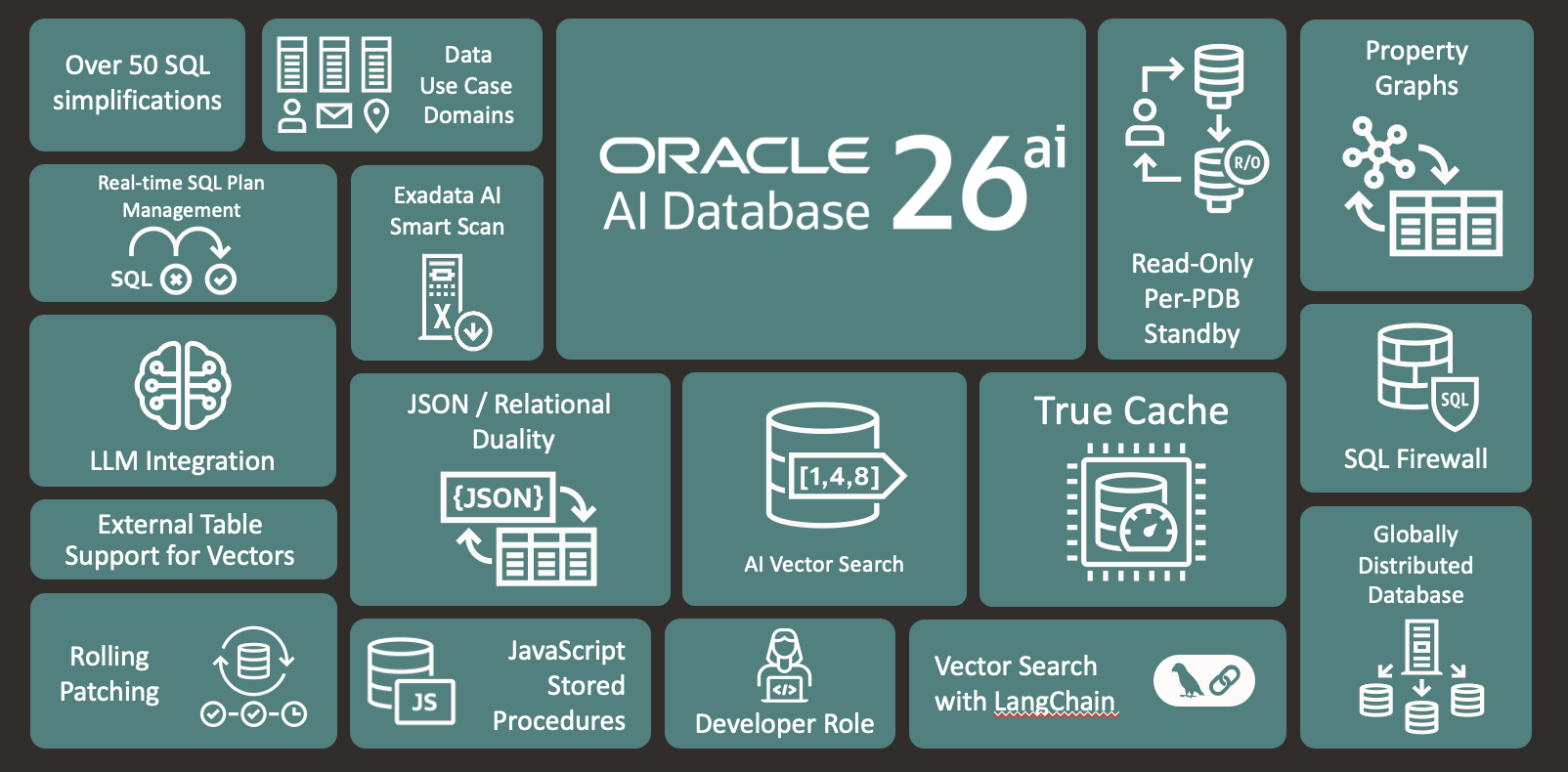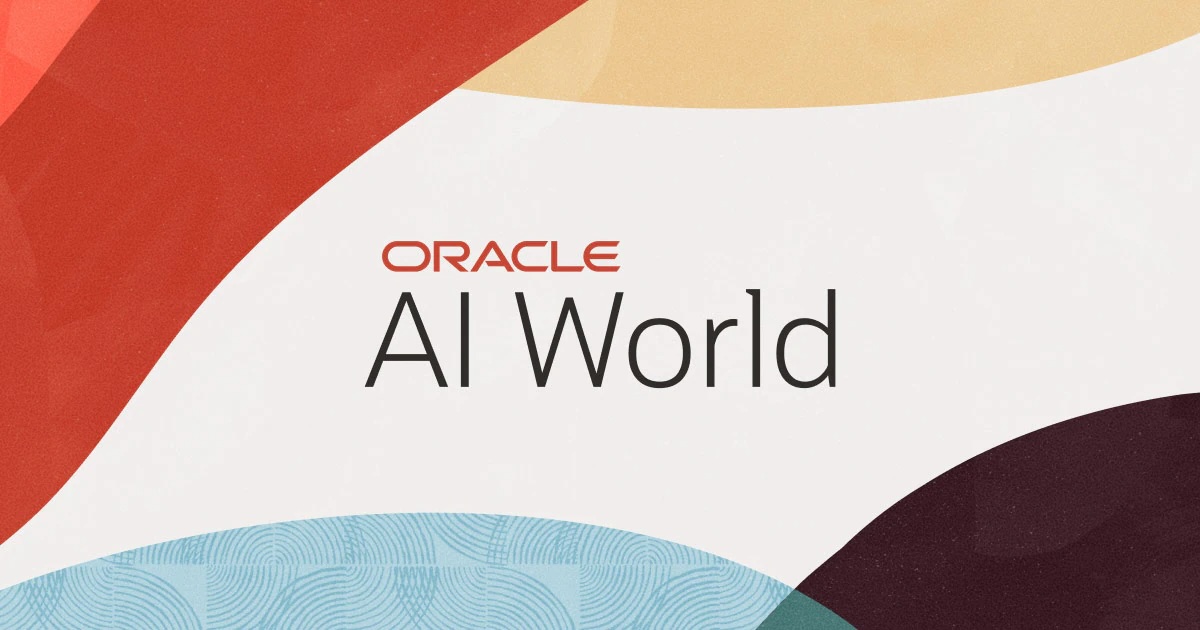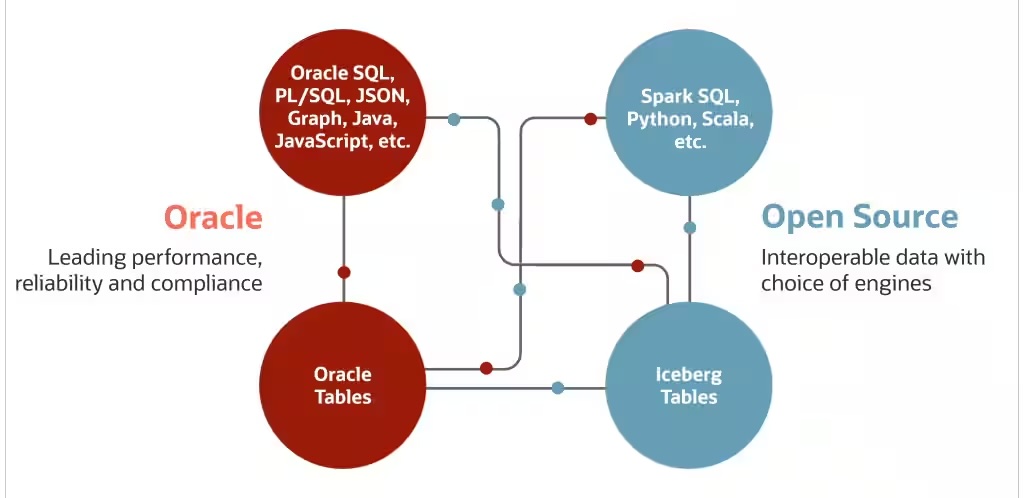Oracle recently introduced significant Generative AI enhancements to its Autonomous Database to simplify the development of AI-driven applications at enterprise scale. The enhancements leverage Oracle Database 23ai technology to empower organizations with tools that make integrating AI, streamlining data workflows easier, and modernizing application development.
Oracle’s updates touch on several areas that accelerate the integration of generative AI for database application development. Let’s look at each:
Retrieval-Augmented Generation (RAG) and Select AI
RAG solves a key problem with Large Language Models (LLMs) by enabling them to access an organization’s private, enterprise-specific data stored in Oracle databases, enriching AI responses with relevant context.
Autonomous Database Select AI simplifies the creation and management of vector stores, allowing developers to enhance their AI applications with enterprise data without additional complexity. It expands SQL to integrate vector search results into natural language queries, combining the power of LLMs with proprietary business insights.
Graph RAG and Graph Studio
Graph RAG integrates graph embeddings into RAG to enrich AI models with complex data relationships, improving the quality of responses and insights.
Graph Studio provides a no-code interface within the Autonomous Database for developers to easily create and manage graph models, accelerating AI application development that benefits from graph-based data representations.
Data Studio for AI Workflows
Smart Data Loading in Data Studio automates data preparation by identifying, enriching, and analyzing data, accelerating AI application development by providing high-quality, ready-to-use data.
Data Transforms allow developers to visually design GenAI pipelines to generate vector embeddings, making it easier to integrate AI-driven insights into applications through an intuitive, visual interface.
Synthetic Data Generation
Developers can now generate synthetic test data for development and testing environments, avoiding the risks of using live production data. This ensures a secure, efficient, and realistic test environment for application development.
Open LLM Integration
Oracle’s Autonomous Database supports an open approach to Generative AI, allowing developers to choose from various LLMs, including OpenAI, Google’s Gemini, Azure OpenAI, Anthropic Claude, and more.
This flexibility enables developers to work with the best LLM for their specific needs, seamlessly integrating AI into applications using simple APIs.
GPU-Powered Python Workloads
Oracle introduces GPU support for AI workloads in Autonomous Database 23ai, significantly accelerating Python-based tasks like deep learning model training and AI embedding generation. This enables developers to handle compute-intensive tasks with greater performance and scalability.
Autonomous Database for Developer
Oracle provides a cost-effective Autonomous Database for Developers offering. This enables developers to access fixed-shape instances of Autonomous Database with full generative AI capabilities at a low, predictable cost. This is ideal for prototyping and development before scaling to production.
The Autonomous Database for Developers Container Image offers flexibility by allowing developers to work offline with a fully functional development environment, increasing versatility for remote or disconnected development scenarios.
Analysis
The enhancements to Oracle’s Autonomous Database make AI-driven application development more accessible, faster, and efficient. By integrating advanced tools like RAG, Graph RAG, and Data Studio, Oracle enables enterprises to bridge the gap between AI models and proprietary business data, creating richer, more contextually aware applications.
These tools streamline AI development workflows, leverage powerful LLMs with private data, and allow enterprises to build sophisticated applications with minimal effort. Oracle’s Autonomous Database is a leading platform for next-generation AI-powered application development by reducing the complexity of AI integration and offering flexible, scalable solutions.
Overall, the new enhancements will help enterprises accelerate time to market, improve application performance, and unlock new opportunities for AI-powered innovation. By embracing an open LLM approach and supporting GPU-powered AI workloads, Oracle is a leader in AI-driven enterprise development, offering tools that scale from prototyping to mission-critical deployments.





